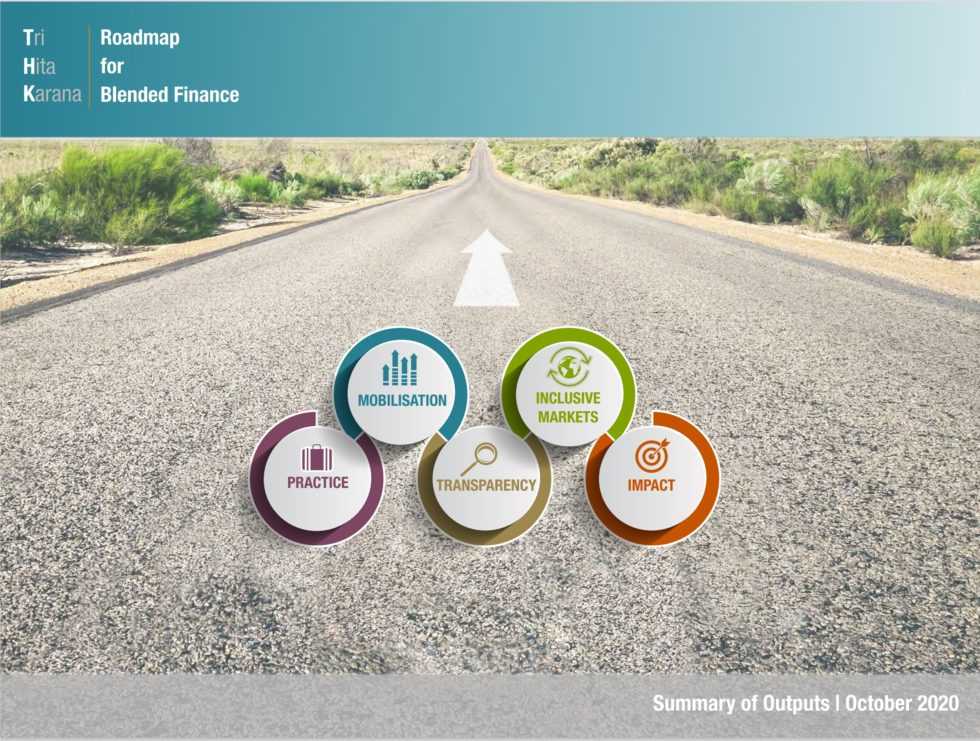THK ROADMAP FOR BLENDED FINANCE |
2018-2020
A Unified Framework to Advance Blended Finance
The THK Roadmap for Blended Finance was launched in 2018 in response to the need for a multilateral framework to advance blended finance outcomes. The value driven framework and guidance developed by the THK Roadmap enables blended finance stakeholders to act coherently and reinforces their actions at the policy and operational levels.
As the blended finance market grows larger, this shared value system provides guidance on the terms of reference to all blended finance actors, enables improved engagement with the private sector and can ultimately drive alignment and greater efficiency in the market.
Capitalizing on the strength of a united, multi-stakeholder approach, five action areas were identified to ensure effectiveness and efficiency in the use and scaling up of blended finance operations.
Working groups were formed to deliver guidance materials to advance blended finance across these five action areas.
Shared Values and Action Areas
Anchor Blended Finance Into SDGs
Mobilisation action area: Accelerate mobilisation of private commercial finance by optimising incentives, financial instruments and standardisation efforts.
Blended finance activities should support developing countries in achieving inclusive, social, economic and environmentally sustainable development that benefits women and girls equally. Blended finance should aim to go beyond what is available, or which is otherwise absent from the market, and should not crowd out commercial finance.
Commit to Using Blended Finance to Mobilise Commercial Finance
Practice action area: Translate a common narrative into good practices.
Blended finance should operate as a channel for commercial capital to address sustainable development. In doing so, blended finance operations should aim at scalability and leverage based on context and conditions. Blended finance should assume a pathfinder role of bringing in commercial capital into sectors and jurisdictions where financing needs are the greatest, such as in LDCs and women’s finance, while balancing risks and rewards with minimum levels of concessionality.
Design Blended Finance to Move Towards Commercial Sustainability
Impact action area: Promote measuring and monitoring of the impact of blended finance investments towards the SDGs.
Blended finance transactions should have a clear strategy for their duration and exit, particularly when concessional finance is used. When blending with concessional finance, the DFI Enhanced Principles should be respected. Suppliers of blended finance resources that can be utilised in a concessional manner can play a significant role in scaling up the effectiveness and efficiency of the blended finance market by actors respecting these DFI Enhanced Principles in all initiatives to be funded with their concessional resources.
Inclusive Markets action area: Addressing specificities in the local and international investment climate.
Blended finance should help to accelerate inclusive sustainable market development, including the local financial market. Local engagement and ownership should be pursued. At the same time, blended finance should be accompanied by efforts to promote a sound enabling environment and investment climate. In addition, availability of information relevant for market making should be coordinated among policy makers, development finance providers, commercial investors and investees to leverage experience and track record. Ultimately, in each market, clarifying, sharing and addressing the root causes for requiring blended financing should be prioritised.
Transparency action area: Build on efforts to facilitate transparency in the use of blended finance, in particular blended concessional finance.
Blended finance should help to accelerate inclusive sustainable market development, including the local financial market. Local engagement and ownership should be pursued. At the same time, blended finance should be accompanied by efforts to promote a sound enabling environment and investment climate. In addition, availability of information relevant for market making should be coordinated among policy makers, development finance providers, commercial investors and investees to leverage experience and track record. Ultimately, in each market, clarifying, sharing and addressing the root causes for requiring blended financing should be prioritised.














